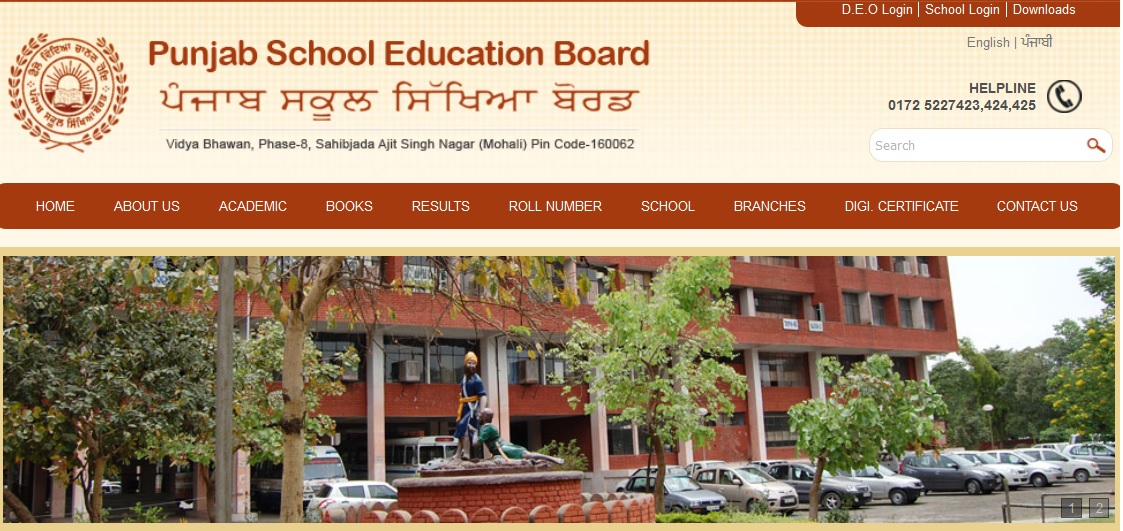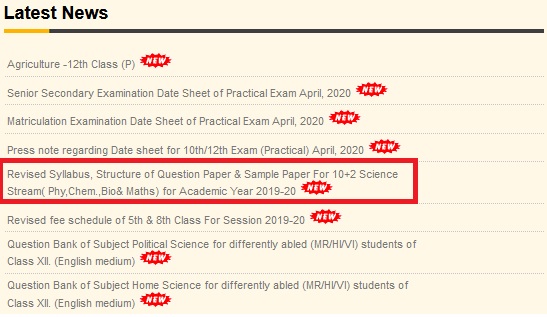PSEB 12th Class Chemistry Sample Question Paper 2019-20 : Punjab School Education Board
Board : Punjab School Education Board PSEB
Class : Class XII
Subject : Chemistry
Document Type : Sample Question Paper/ Model Test Paper
Year : 2019-20
Website : https://www.pseb.ac.in/latest-news
PSEB XII Chemistry Sample Question Paper
Download the Sample question paper of Class XII Chemistry from the official website of Punjab School Education Board.
Related : PSEB Class XII Physics Sample Question Paper 2019-20 : www.pdfquestion.in/34815.html
Instructions
1. There will be one theory paper comprising of 18 questions. All questions are compulsory.
2. Question no. 1 will have 20 sub parts and each part will carry 1 mark. All questions are compulsory. This question will be of multiple choice, numerical, one word answers, true false and comprehensive.

3. Question no. 2 to 8 will be of two marks each. There will be internal choice in two questions. All questions are compulsory.
4. Question no.9 to 15 will be of three marks each. There will be internal choice in two questions. All questions are compulsory
5. Question no.16 to 18 will be of five marks each. There will be internal choice in them.
Section-A
Passage Based Question : (Q No. i to v)
Read the given passage and answers following questions
There are mainly two type of adsorption of gases on solids. If accumulation of gases on the surface of solid occurs on account of weak vander waal forces, the adsorption is termed as physical adsorption.
When gas molecules or atoms held to solid surface by chemical bonds, adsorption is termed as chemical adsorption. The chemical bonds may be covalent or ionic. Chemical adsorption involves a high energy of activation therefore it is referred as Activated adsorption.
A physical adsorption at low temperature may pass into chemical adsorption temperature is increased.
i. What is adsorption?
ii. Which adsorption is known as activated adsorption?
iii. Give conditions of temperature which favour physical adsorption.
iv. What are type of adsorption?
v. What type of force exist in physical adsorption?
Q No.(vi) to (x) are one word :
vi. Name the monomer of PVC.
vii. Name the medicine use to lower high fever.
viii. Give IUPAC name of CH3CH2NHCH3.
ix. Name one reagent used to distinquish between aldehyde and ketones.
x. Give formula of Caro’s Acid.

Section-B
(Short Answer Questions 2 marks Q 2 to 8)
2. Why transition metals show variable oxidation states?
3. Explain (a) lonisation isomerism (b) Linkage isomerism
Or
Give IUPAC names (i) K3 [Fe (CN)6)] (ii) [Co (en)2 Cl(NO2)]+
4. Explain froth flotation process.
5. Why H2S is more Acidic than H2O?
6. Give difference between DNA and RNA.
7. In a reaction when the concentration of reactants is tripled, the rate of reaction becomes 27 times. What is order of reaction?
8. A 1st order Reaction is 20% complete in 10 minutes. Calculate the time required for 75% completion.
Or
Prove that t75%=2t50% for 1st order reaction
Download XII Chemistry Sample Question Paper :
https://www.pdfquestion.in/uploads/pdf2019/34815-SP.pdf
Section-C
Long Answer Question, 3 marks Q 9 to 15
9. Give monomers and equation of preparation for followings
i) Nylon 6,6 ii) Terylene ii) Bakelite (1+1+1)
10. Phenols are more acidic than alcohols why.
OR
Explain
(i) Reimer Tiemann reaction
(ii) coupling reaction
(iii) kolbe’s reaction. (1+1+1)
11. Aldehydes are more reactive than ketones towards nucleophilic addition reaction.
OR
Carboxylic acid have both carbonyl group and hydroxyl group but don’t show the properties of carbonyl why.
12. Calculate emf of following cell at 298K
Fe (s) Fe2+ (0.001M)II H+ (1M)I H2 (s) (1bar)I Pt(s) EºFe2+/Fe=-0.44V
13. Explain electrochemical Theory of rusting.
14. Calculate the mass of non volatile solute (molar mass= 40gm) which should be dissolved in 114g of octane to reduce its Vapour Pressure to 80%.
15. (i) Define Raoult’s law.
(ii) Give differences between ideal and non ideal solutions. (1+2)
Section D
Long answer Type-II 5 marks 16-18
16. Explain
(i) Finkelstein Reaction (ii) Sandmeyer Reaction
(iii) Swarts Reaction (iv) Gatterman Reaction
(v) Ullmann’s Reaction (1+1+1+1+1)
OR
(i) What is the mechanism of SN 1 reaction.
(ii) Why alkyl halide are insoluble in water. (3+2)
17. (i) Why Halogens are coloured.
(ii) Flourine is stronger oxidizing agent than chlorine why
(iii) Give structure and hybridisation of XeO3 (2+2+1)
OR
(i) Give Chemistry of contact Process.
(ii) SO2 is stronger reducing agent in alkaline medium than acidic medium.
(iii) Give structure and hybridsation of XeF6. (2+2+1)
18. (i) Give preparation of KMnO4
(ii) Transition metals forms alloys why? (3+2)
OR
(i) Give preparation of K2Cr2O7.
(ii) La (OH)3 is more basic than Lu(OH)3 why? (3+2)